Lab Culture: LLAMA Lab
Written by: Tim Brouk, tbrouk@purdue.edu
How many llamas can fit inside the Purdue University LLAMA Lab?
No one really knows.
Of course, no real llamas are herded into Associate Professor Arielle Borovsky’s Language Learning And Meaning Acquisition (LLAMA) Lab. LLAMA’s llamas are two-dimensional pictures all over walls, behind doors and drawn on surfaces in the Department of Speech, Language, and Hearing Sciences research facility. Llama books and toys can be found in many corners of the space.
“I feel like every single time we find something llama-related, we grab it, buy it and pull it into the lab,” said Claney Outzen, LLAMA Lab project coordinator.
The lovable camelid is the mascot for the lab, which welcomes young participants between the ages of 18 months and 6 years in ongoing research initiatives in learning how and when young children verbalize and recognize words.
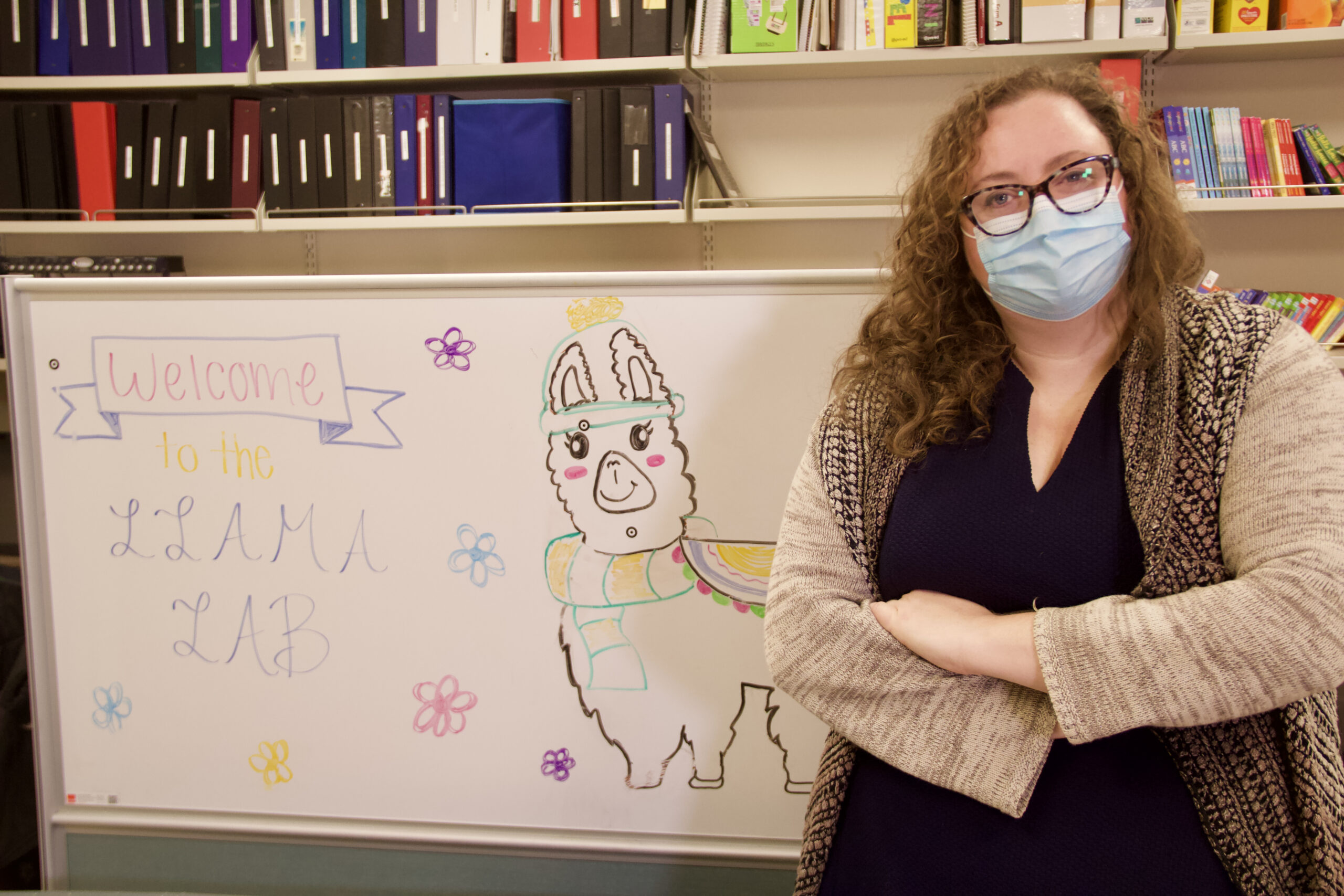
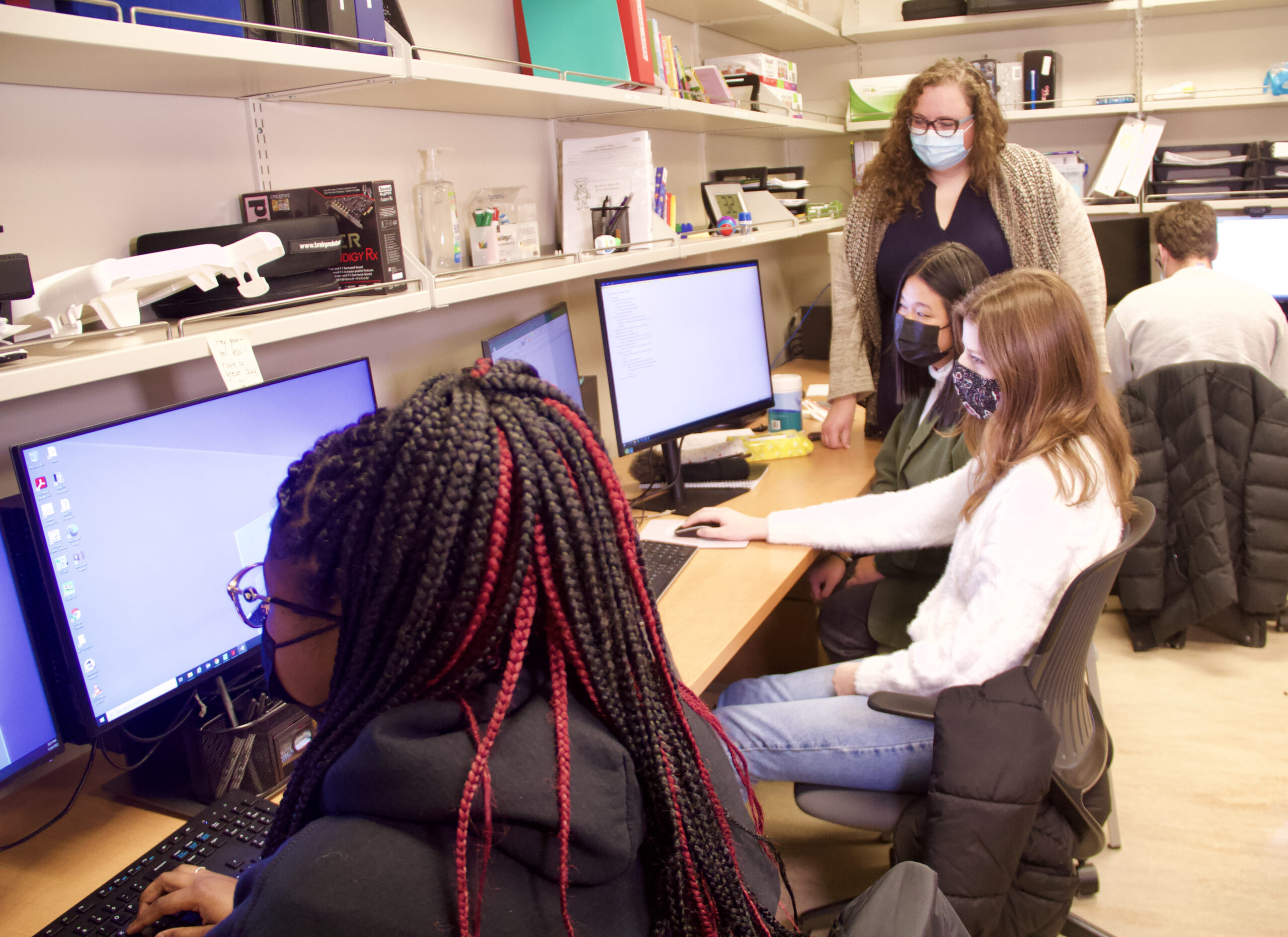
“Some of the questions we focus on is how children learn words, how they make sense of the world around them to do that and how they understand language in everyday spoken context,” said Borovsky, recipient of the 2021 Purdue College of Health and Human Sciences’ Early Career Research Achievement Award. “Some of the problems we’re really trying to solve are how to help identify children who might have early concerns that could be remedied by early attention and support before they get to school and other ways that we can understand how to help all children succeed as they learn language, which is an amazing and exciting process.”
The colorful, cozy environment puts the children and their caregivers at ease as Borovsky and her team conduct intake work and lab experiments.
The eyes have it
Data is often collected through eye-tracking technology. The young participants wear a tracking sticker above their right eye. A specialized infrared camera focuses on the sticker like a mini bullseye.
Behind a curtain, student LLAMA Lab researchers collect data while the young participant looks at images or videos on a monitor. The researchers record where the child looks at a screen, how long it takes for them to look at a correct object and how long they look.
This data is part of work that explores why some children are slower to verbalize than others. So far, the research confirms that just because a child can’t or won’t say “table” doesn’t mean the child can’t recognize the piece of furniture when they hear the word “table.” The eye-tracking proves this in the LLAMA Lab when a picture of a table and dog are side by side on the monitor. A woman’s voice asks the child where the table is, and the eye-tracking records the child’s recognition.
This process allows children to “tell” Borovsky and her team how they are coming along in words and language recognition when the child can’t verbalize this for themselves — essentially allowing her to see how the child is processing things in real-time.
“Their eye movements toward the things being named during the video helps us understand when do children understand what we’re talking about and how well they understand those words,” Borovsky explained.
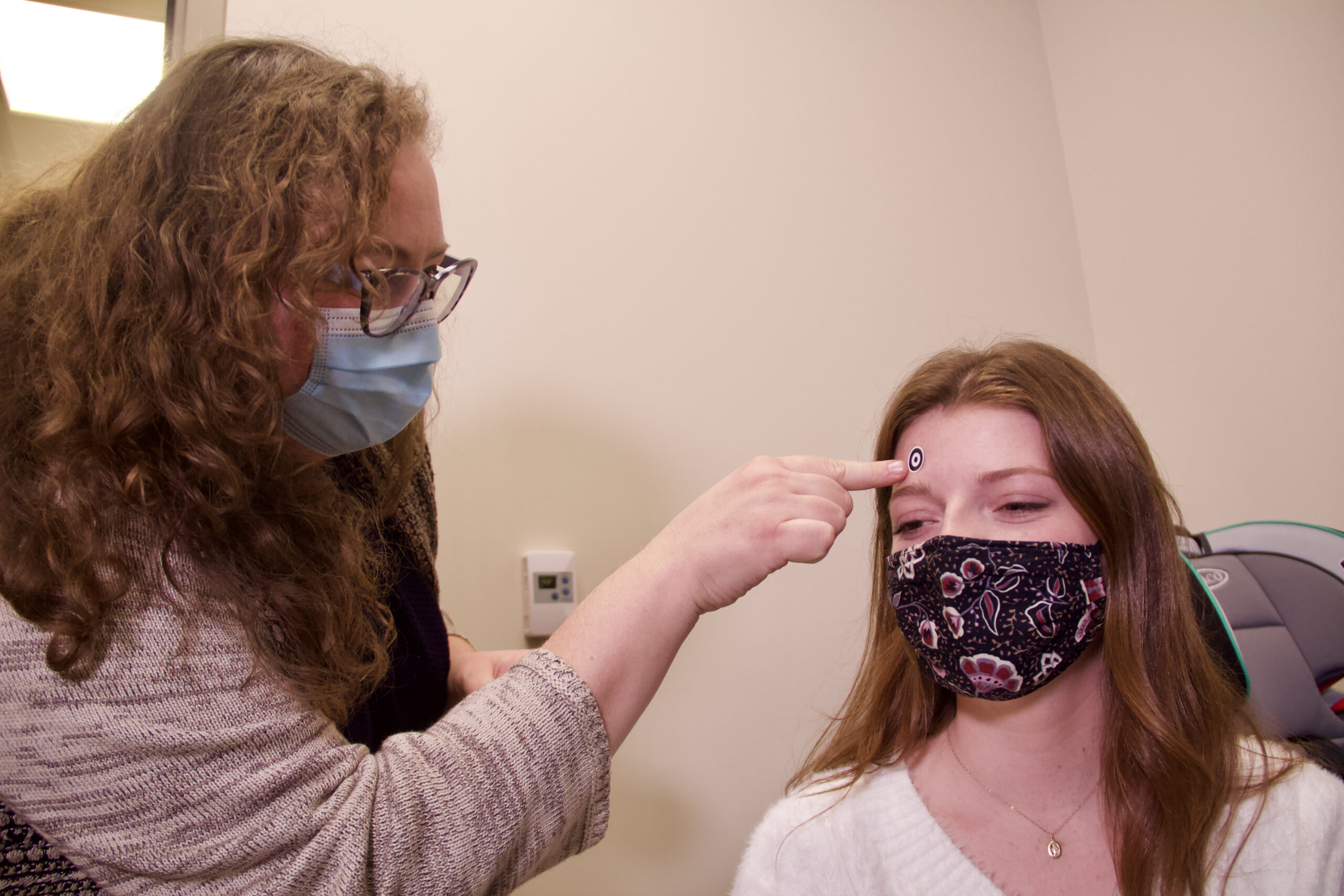
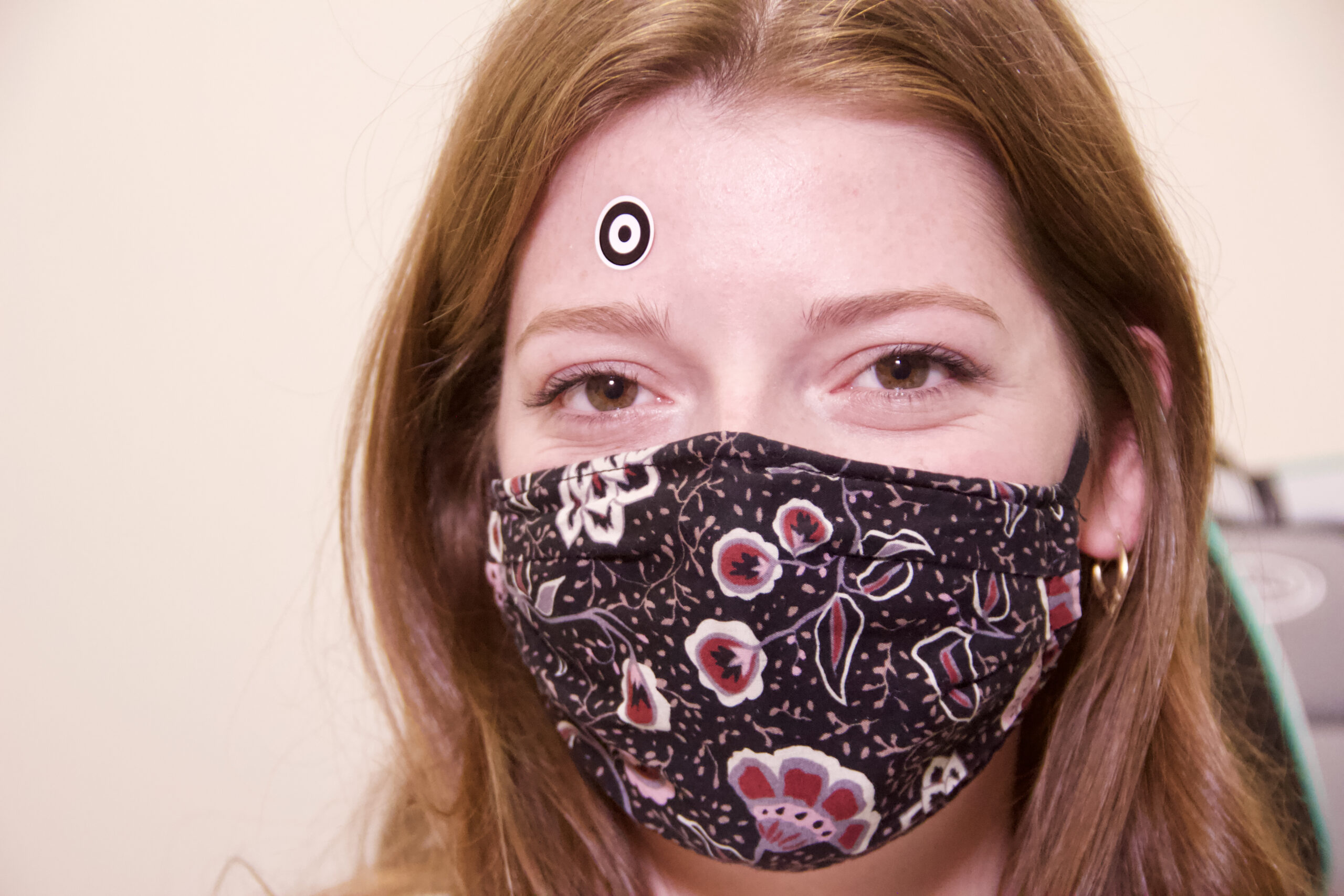
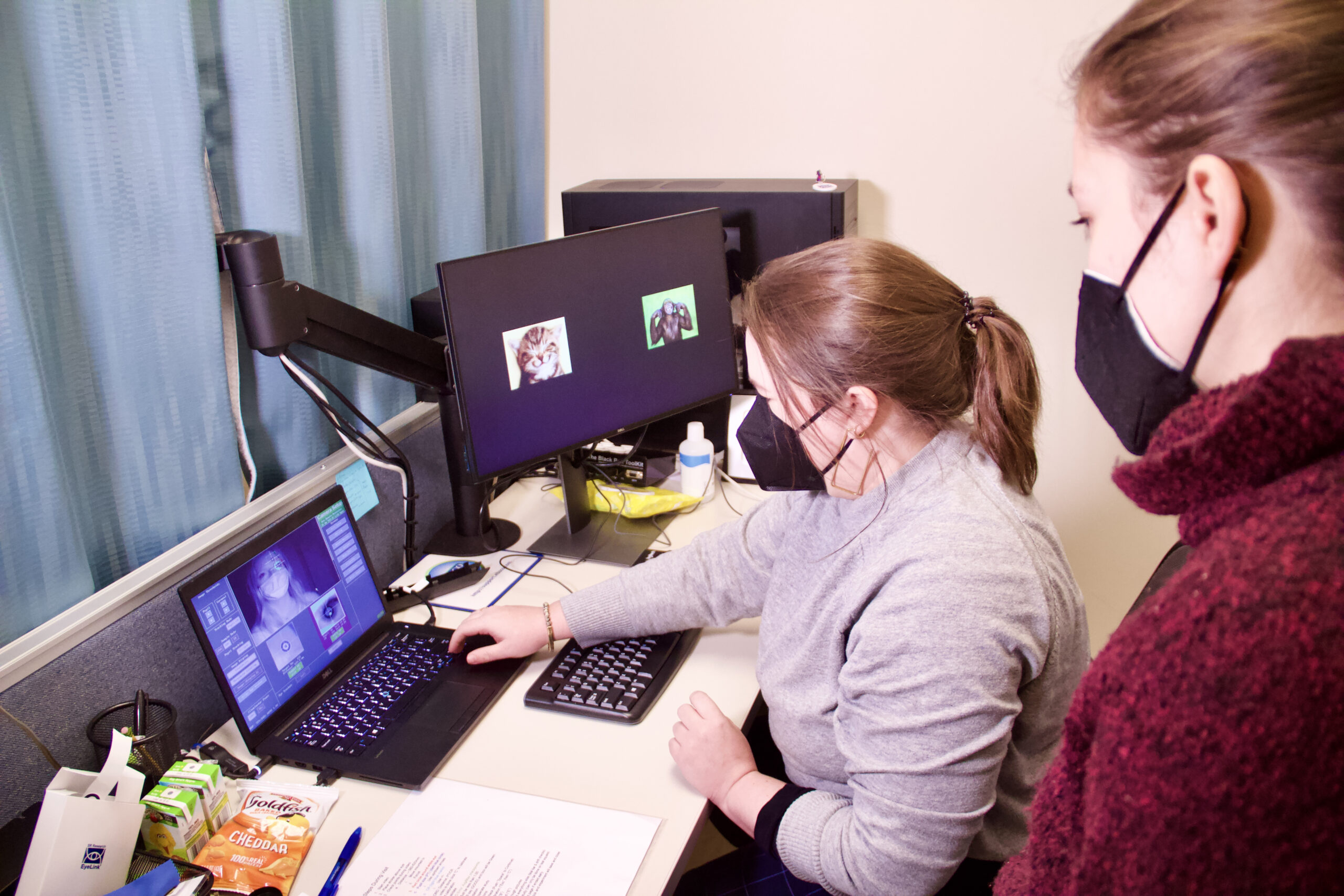
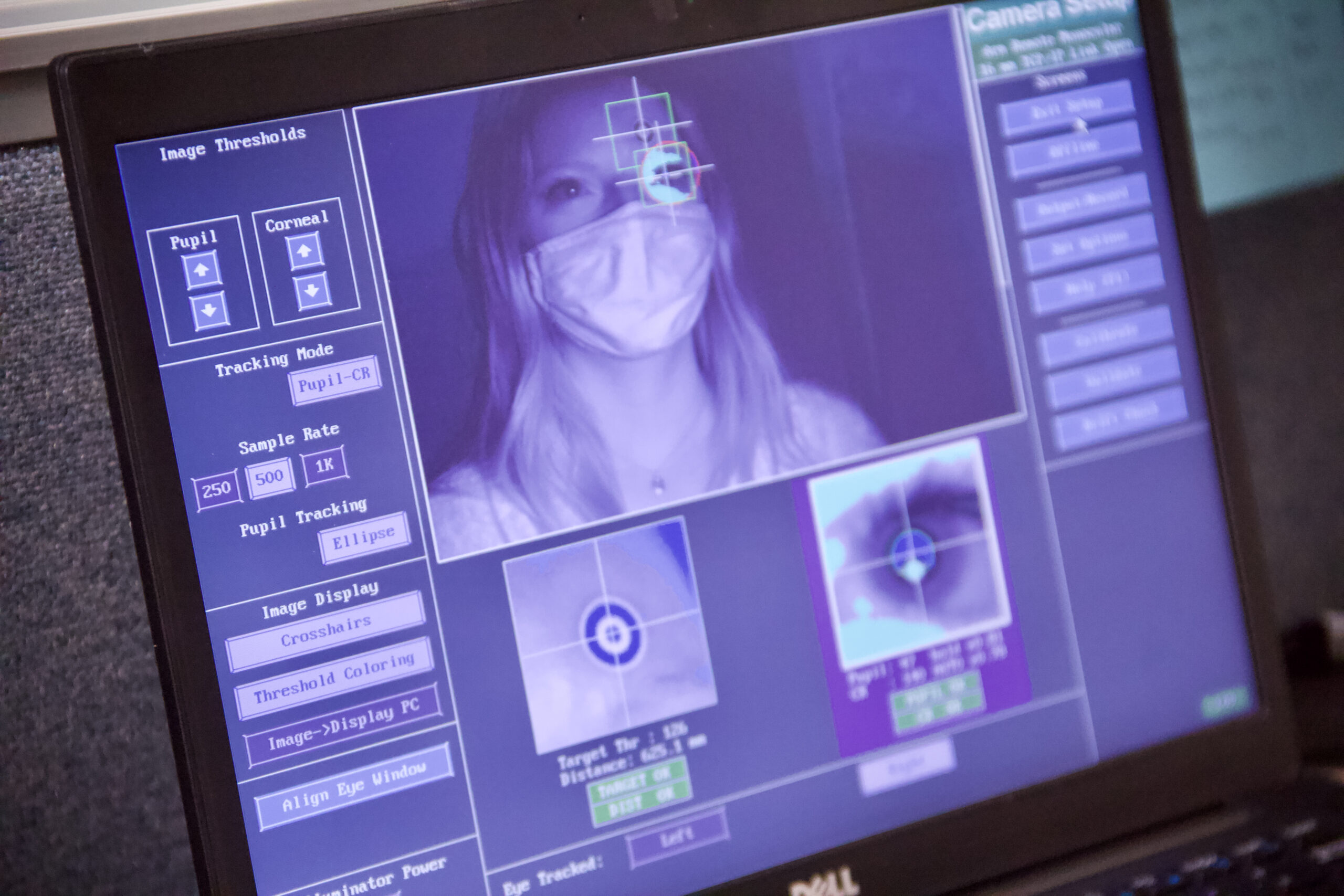
‘Word explosions” via LASER
Optimal learning about children’s language development cannot happen in just one eye-tracking session. One of Borovsky’s research projects, LASER, examines this over years, aiming at finding that “word explosion” — a term for when a young child’s vocabulary goes from dozens of words to hundreds or even thousands in a short stretch of time.
“We follow-up with them every six months until they are just about ready to go to school,” Borovsky said. “It’s a really exciting time in language development. Some children pick up the pace quickly and others are more gradual and both are normal and totally fine.”
A minority of children display prolonged low vocabularies. Sometimes their first words are delayed or the time between those first words and the coveted word explosion is prolonged.
“In some cases, this could be an early risk factor for a language learning disorder, sometimes for autism and other kinds of issues that could affect learning when the child gets to school,” Borovsky said. “Other cases, it’s fine and children catch up.”
LASER looks to develop more detailed processes in figuring out the differences between a child who could have a language learning disorder and a child whose “explosion” is just slower to ignite. Parents, clinicians and educators will then be better informed in how the child is learning and if more attention or intervention is needed.
“If we can help children earlier, we can make a bigger difference for them earlier,” Borovsky said.
Llearning in LLAMA
Undergraduate and graduate students in Borovsky’s lab are experiencing research in numerous ways: collecting data, learning eye-tracking technology, coding to best visualize the data and enjoying the adventure of working with child participants, just to name a few.
Senior Joseph Cox is developing code to better organize data from studies in the form of reports so parents can easily see how their child is understanding and developing language.
“They can actually watch their kids learn language,” Cox explained. “It’ll even include
networks that show connections to the words they know.”
While coding is “behind the scenes” work, Cox said he enjoys the camaraderie in the LLAMA Lab as well as the unpredictable nature of working with such young participants. He’s even had to “babysit” a sibling while their big brother was participating in the eye-tracking experiments.
Kennedy Skipper, a speech, language, and hearing sciences senior, is enjoying her fifth semester as a LLAMA Lab research assistant. Over the years, she has helped Borovsky with transcription of child participants’ vocabularies, and she has noted what words are used by the children and their caretakers from videos of controlled play sessions. This experience will benefit her as she pursues a career in speech-language pathology.
“I’ve been able to gain some really good skills in terms of conducting my own research as well as being able to create a good learning environment,” said Skipper, who also has studied adult speech-language pathology as well. “I’ve learned how to write protocols, how to ask some really great questions, how to think critically. Those are skills in life that you’re going to use regardless of what you do.”
Discover more from News | College of Health and Human Sciences
Subscribe to get the latest posts to your email.